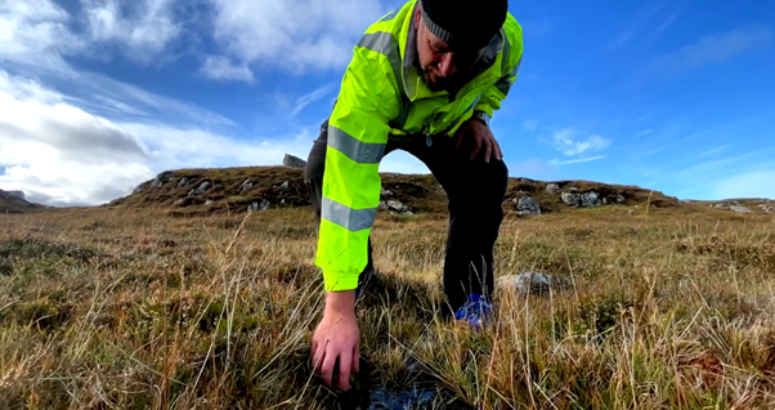Pioneering peatland project progresses
14 November 2023The first phase of Scottish Water’s restoration work was carried out at Loch Fasgro on the Isle of Lewis, and so far over phases one and two more than 40 hectares has been restored.
Phase three is due to get under way in the 2023/24 restoration season.
“We’ve seen in the last 10 years a change in the climate; longer, drier periods in the summer time – even out here in the Outer Hebrides – and much heavier rainfall which is causing massive spikes in organic matter coming into our treatment works from these wet weather events.
Jared Stewart
What we’re seeing with peatland restoration is that these peaks are starting to reduce as we stabilise the peatland and the quality of the raw water coming into the works. ”
Sustainable Land Management and Abstraction Team Catchment Management – Technical Lead
TWO years after launching a peatland restoration project in the Outer Hebrides, Scottish Water has returned to check on its progress.
Peatland ACTION is led by Nature Scot in partnership with a number of organisations, including Scottish Water, and funded by the Scottish Government. The first phase of Scottish Water’s restoration work was carried out at Loch Fasgro on the Isle of Lewis, and so far over phases one and two more than 40 hectares has been restored – with phase three due to get under way in the 2023/24 restoration season.
Before the programme got under way, peatland at Loch Fasgro was badly eroded and exposed; peat was washing into burns and lochs, into the water treatment works, and was releasing carbon dioxide into the atmosphere. Covering exposed peat hags and installing peat bunds has helped transform the landscape for the better.
Jared Stewart, who is leading the project for Scottish Water’s sustainable land management and abstraction team, said: “We are now seeing a stabilisation of organic matter coming into the works, with a reduction in the seasonal and rainfall event-driven spikes in organics. Returning the land back to functioning peatland means it acts like a filtration system itself – before the water even reaches the treatment works.
“This means we can contribute to a reduction in the carbon footprint as we can reduce the amount of energy and chemicals used to produce drinking water. Plus, once the peatland is back into a functioning, healthy peat bog it actually starts to capture carbon itself.”
Scottish Water, which is publicly-owned, has set a net zero emissions target of 2040 and it’s pioneering projects like this that are helping progress towards that goal.
Malcolm Walker, Scottish Water’s Catchment Liaison Officer, said: “Before the peatland was restored there were drainage channels on the exposed hags and the water was running off the site, eroding the peatland as it was going. We’re now holding back the water and, following a particularly wet spell, it’s looking really good.”
This site is technically challenging due to the low depth of the peat, so the team had to use different techniques to raise the water table.
Jared added: “We’re now seeing natural revegetation of these pools that have been created; they’ve vegetated with sphagnum moss which is holding onto the water. The fact it’s reseeded itself is a wonderful sight to see, and this is now actually functioning as a proper peatland – a healthy peatland.
“We’ve seen in the last 10 years a change in the climate; longer, drier periods in the summer time – even out here in the Outer Hebrides – and much heavier rainfall which is causing massive spikes in organic matter coming into our treatment works from these wet weather events. What we’re seeing with peatland restoration is that these peaks are starting to reduce as we stabilise the peatland and the quality of the raw water coming into the works.
“If we continue with peatland restoration over the years, while the natural environment heals itself, and we got more of the bogland plants such as sphagnum moss and sundews, we should see a reduction of the natural organic matter coming into the works.”
The Peatland ACTION programme recently won the Holyrood Climate Action Award for Nature and the Environment, and is also shortlisted for the RSPB Nature Scotland Awards.








